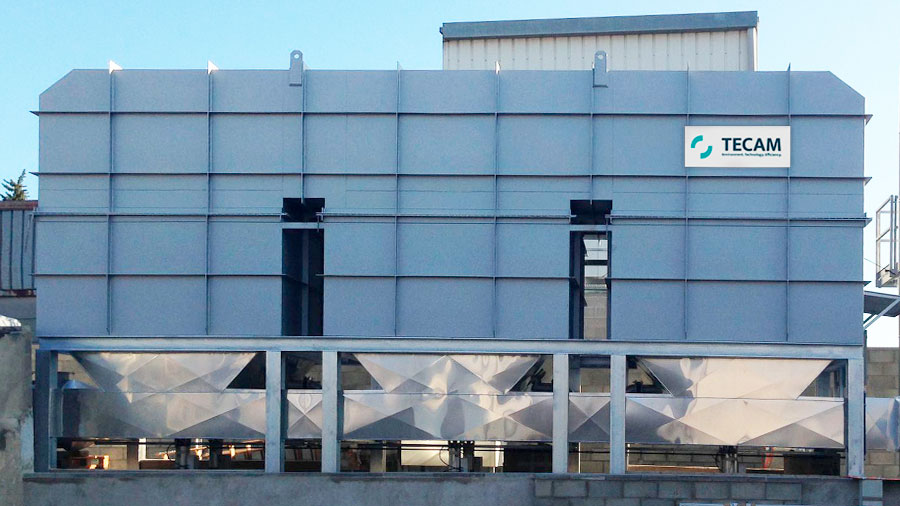The main difference between Regenerative Thermal Oxidizer (RTO) and Thermal Oxidizer (TO) is the different methods they use for heat recovery in the system.
- Regenerative Oxidizers pass hot exhaust gas and cooler inlet gas through two or more heat exchanger beds containing ceramic media.
- Thermal Oxidizers pass hot exhaust through an air-to-air heat exchanger–typically through a shell and tube heat exchanger design–to heat the cooler inlet gas.
Depending on the nature of the processes and flue gases to be treated. Both solutions could be used as a mean to optimize operating expenses by implementing Heat Recovery Systems in parallel to convert process exhaust stream Volatile Organic Compounds and Hazardous Air Pollutants into the lowest amounts of CO, H2O and thermal energy discharges to atmosphere.
Regenerative Thermal Oxidizer (RTO)
RTO systems are used to destroy Volatile Organic Compounds (VOCs) such as hydrocarbons, solvents and other hazardous air pollutants. RTOs are the most common and most effective air pollution control equipment in use nowadays.
Typically run at higher temperatures than Thermal Oxidizers somewhere between 815 °C to 1200 °C and have better heat recovery efficiency (up to 99%) which can be achieved through the use of multiple energy recovery chambers supplied with ceramic media to absorb and store the heat energy produced at its RTOs combustion chambers.
RTOs are the smartest solution when processing low VOC concentrations and require long, continuous operations. Some examples of where RTOs work best are for processes that require ventilation to work properly, such as painting booths, paper mills, printing facilities, pharma processes, etc.
Thermal Oxidizer (TO)
Thermal Oxidizers, also known as Direct-Fired Thermal Oxidizers (DFTO), are ideal solutions for high solvent loading and fluctuating operating conditions.
Thermal Oxidizers operating temperatures range from 600°C to 850°C, and gas residence times are typically 2 second or less. These conditions cause the process stream’s molecular structure to break down into simple carbon dioxide and water vapour.
In the integration of customers’ process heating operations together with their Thermal Oxidizer requirements, this solution can evolve to different configurations like Recuperative Thermal Oxidizers or Catalytic Thermal Oxidizers. Therefore, understanding the nature of the process stream is critical to sizing and setting the Thermal Oxidizers. Selection and placement of flame arrestors between the vapour source and the thermal oxidizer as well as configuring the control and placement of the process stream are key to achieving the desired system performance.
If you need technical advice on which technology for emissions treatment suits your production site the most, please contact us today – we’ll be happy to help you manage your challenge:
+34 93 428 11 54

